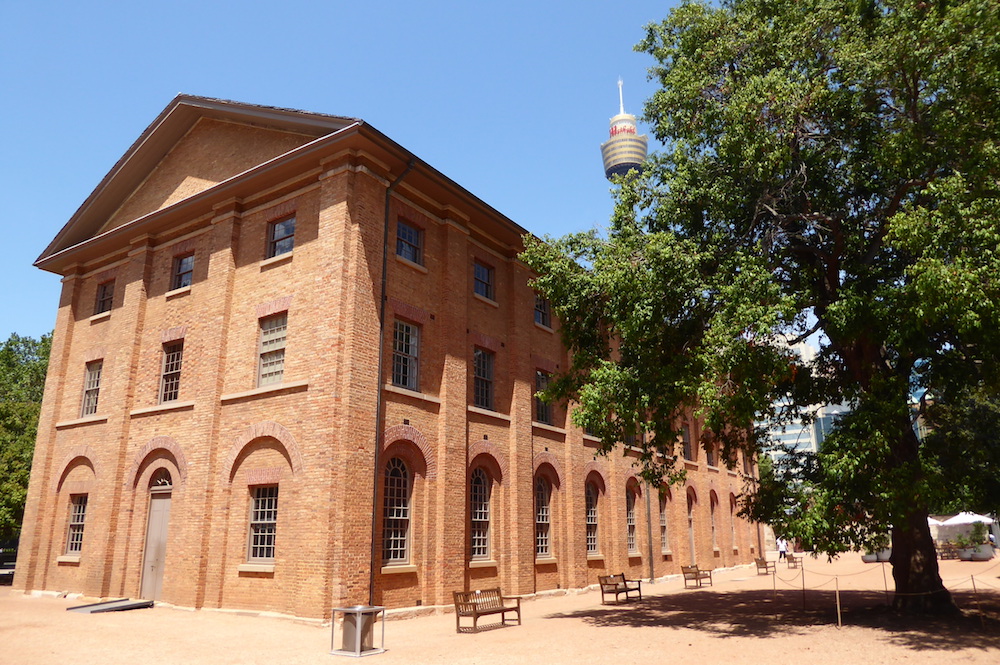Ahead of our Australian holiday I started reading A Commonwealth of Thieves, the excellent Thomas Keneally book that describes the arrival of the First Fleet of convicts in New South Wales in 1788 and its consequences.
On our second day in Sydney we visited two places that played a key role in the early years of the colony – the notorious Hyde Park Barracks and the rather more picturesque Watsons Bay. It was a sunny and sweltering day with temperatures well into the 30s and we’d woken early, the result of the time difference, and Graham was suffering from jet lag and keen to get up and about.
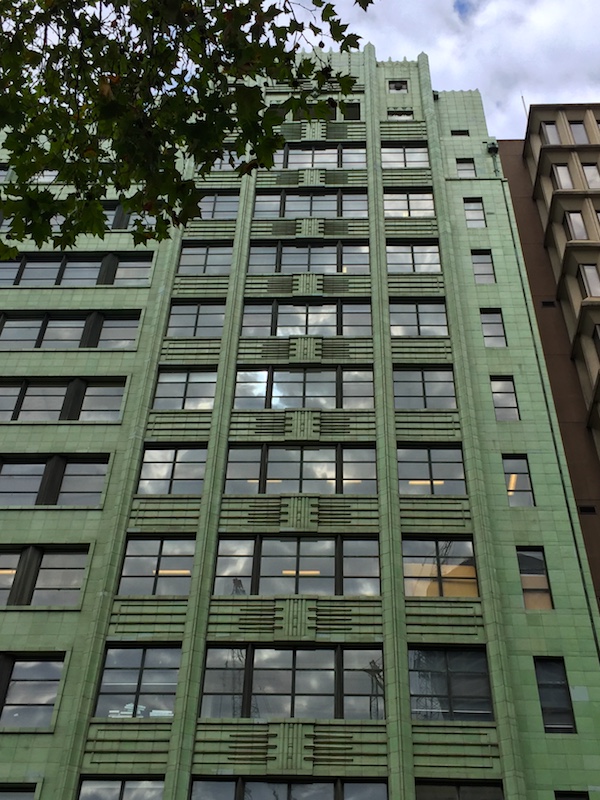
The barracks sit on the edge of Hyde Park, close to the towering cathedral. We walked through the CBD, past towers, shopping centres and buildings of all shapes and sizes. Some standouts included the stylish Art Deco Department of Railways near Wynyard Station, designed by architects Budden & Mackey in the 1930s, and the vast and imperial Queen Victoria Building. Built out of sandstone in the Romanesque Revival style, it’s an elegant shopping mall with intricate iron balustrades and up-market shops, and it occupies an entire block. It’s astonishing to think that a few decades ago there were plans to demolish it…
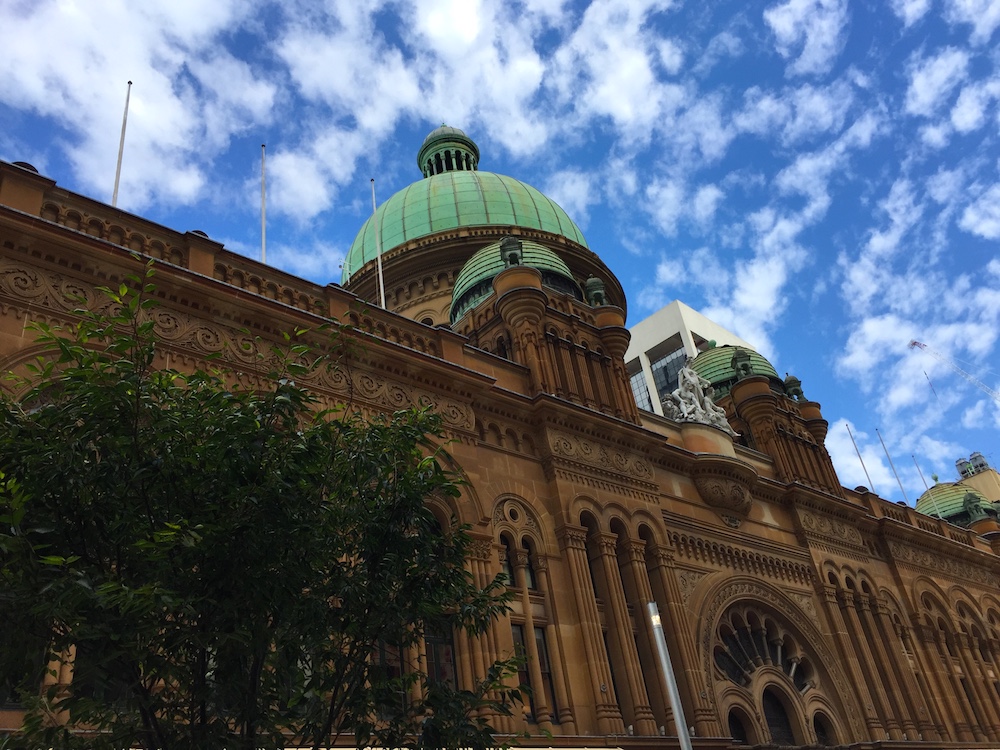
The main barracks building, by contrast, is sturdy and functional, built of red brick (pictured top). It was designed by Francis Greenway, a convict who went on to serve as principal architect of the early Sydney settlement, and stands opposite another of his works, St James’ Church.
The barracks was the site of countless horrors and humiliations over the years and until the end of transportation was home to convicts who worked for the government on various projects in the growing city. Later it became a transit stop for migrants, an asylum and city administrative offices. The conversion to a museum has been handled sensitively and the result is excellent, with displays telling the stories of those who were confined and worked there. It’s often moving, always informative, never dull. Interestingly, the museum’s teams have stripped back layers of history, exposing old paint layers, signage, foundations and the like to reveal more of the original structure.
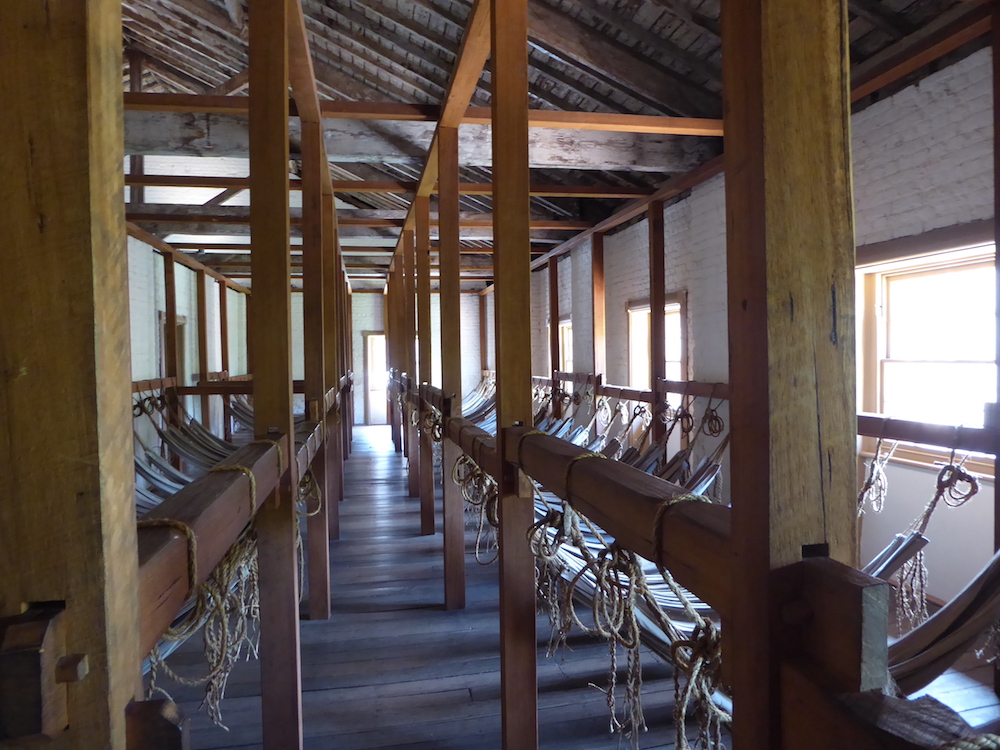
Despite having read several books about the convicts and early Australia, it was still disturbing to discover what the convicts and other early settlers went through, the consequences their arrival had for the indigenous people, and the sheer insanity of the British government’s decision to pursue such a policy – and for so long into the 19th century.
We pondered what we’d seen and rehydrated in the museum’s cafe, then chose to spend a few hours several miles away at Watsons Bay on the tip of South Head, where the harbour opens up into the Pacific Ocean.
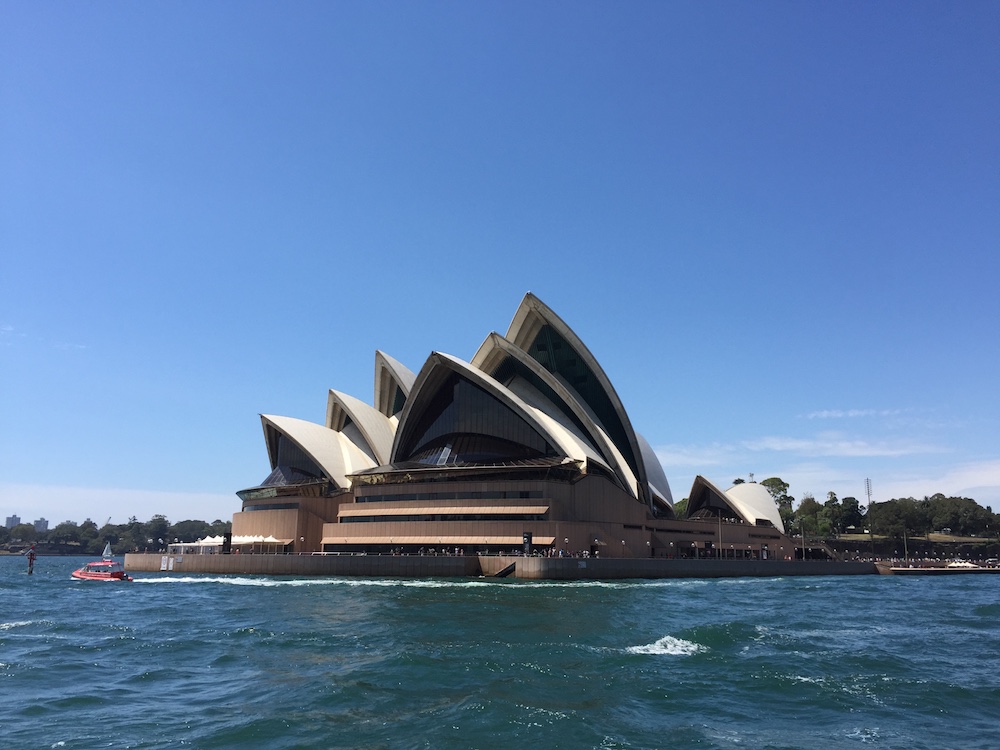
We wandered blindly around the city, trying to get our bearings and to find the ferries at Circular Quay, and eventually got there after several dead ends. The yellow and green ferries are almost as iconic as the Opera House and buzz at speed around the harbour, which meant our journey took less than half an hour. Even better, the wind buffeted us and provided some relief from the sweltering heat.
The journey offered the best views of the Opera House and the Harbour Bridge. As we sailed west, we spotted naval vessels moored up on the other side of Farm Cove, sea planes darting about in the sky above us and beautiful suburbs clinging to the hills and bays to the north and south.
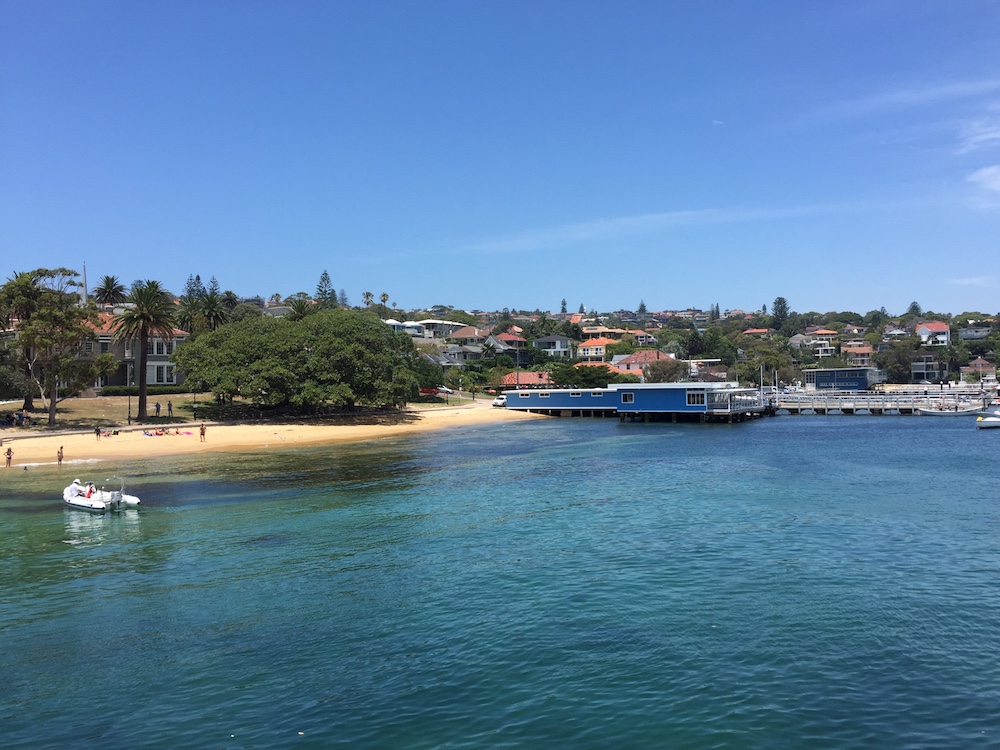
Watsons Bay looked exquisite as we approached and docked, with an inviting if modest sandy beach and some attractive houses beyond a little park. Many handsome craft were moored in the bay and a couple of seafront restaurants were doing a roaring lunchtime trade. We spent a pleasant few hours at Doyles, a local landmark famous for its seafood that had been recommended to us by a woman of a certain age we’d bumped into somewhere in the city. I had a couple of excellent John Dory fillets and a few glasses of a crisp white wine.
Just a couple of hundred yards away I spotted an obelisk on the shore, which marks the point where Governor Arthur Phillip first set foot in the harbour (or Port Jackson as it would become known) back in 1788 after giving up on the idea of settling at Botany Bay. He wouldn’t hang around for long, choosing instead to establish his settlement a few miles west at what we now know as Sydney Cove.
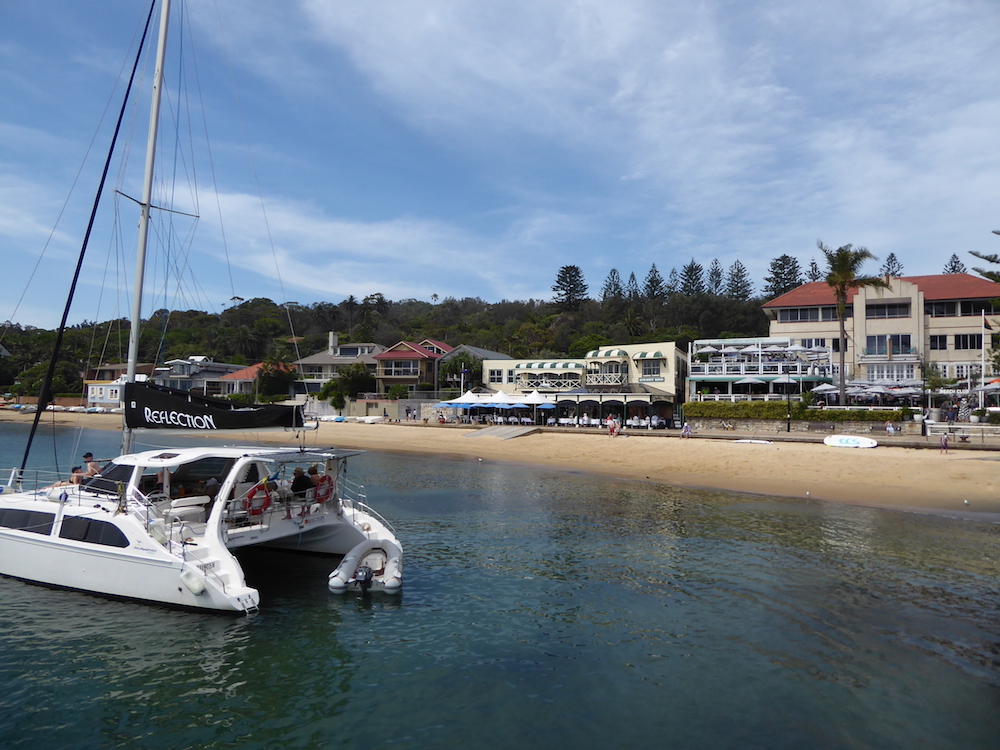
It was too hot to go for a walk around the headland, so we took a quick look around what passed as the Watsons Bay high street, had a paddle and caught the ferry back to meet Graham’s brother and his girlfriend for a few drinks in the modern and touristy Darling Harbour development.
In the evening, the two of us chose to go to Surry Hills but the roads were in a right state thanks to the construction of a new light rail line and the restaurants were either dead or on the verge of closing for the evening. So we retraced our steps on the train back to Wynyard and found ourselves by chance at another branch of the Munich Brauhaus that we’d visited on our first night in Sydney. So, in a city of a zillion bars and restaurants, we managed to have exactly the same to eat and drink two nights out of three…

